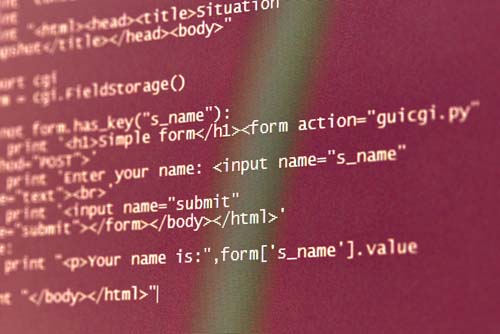Go語言常用加密算法和加密技術全面解析!

在現代計算機領域,安全性非常重要,而加密技術是保證計算機信息系統安全性的重要措施之一。為了滿足這個需求,Go語言提供了豐富的加密算法和加密技術,本文將為大家詳細解析Go語言中常用的加密算法和加密技術。
一、對稱加密算法
對稱加密算法是加密和解密使用相同的密鑰的一種加密方式。常用的對稱加密算法有DES、3DES、AES等。Go語言中的crypto包中提供了多種對稱加密算法。
以下是一個示例,使用AES加密算法加密字符串,然后再進行解密:
`go
package main
import (
"crypto/aes"
"crypto/cipher"
"fmt"
)
func AesEncrypt(plainText, key byte) (byte, error) {
block, err := aes.NewCipher(key)
if err != nil {
return nil, err
}
iv := byte("1234567890123456")
plainText = pkcs5Padding(plainText, block.BlockSize())
blockMode := cipher.NewCBCEncrypter(block, iv)
cipherText := make(byte, len(plainText))
blockMode.CryptBlocks(cipherText, plainText)
return cipherText, nil
}
func AesDecrypt(cipherText, key byte) (byte, error) {
block, err := aes.NewCipher(key)
if err != nil {
return nil, err
}
iv := byte("1234567890123456")
blockMode := cipher.NewCBCDecrypter(block, iv)
plainText := make(byte, len(cipherText))
blockMode.CryptBlocks(plainText, cipherText)
plainText = pkcs5UnPadding(plainText)
return plainText, nil
}
func pkcs5Padding(cipherText byte, blockSize int) byte {
padding := blockSize - len(cipherText)%blockSize
padText := bytes.Repeat(byte{byte(padding)}, padding)
return append(cipherText, padText...)
}
func pkcs5UnPadding(plainText byte) byte {
length := len(plainText)
unPadding := int(plainText)
return plainText
}
func main() {
plainText := byte("Hello World")
key := byte("12345678901234567890123456789012")
cipherText, err := AesEncrypt(plainText, key)
if err != nil {
fmt.Println(err)
return
}
fmt.Printf("Cipher Text: %x\n", cipherText)
plainTextResult, err := AesDecrypt(cipherText, key)
if err != nil {
fmt.Println(err)
return
}
fmt.Printf("Plain Text: %s\n", plainTextResult)
}
二、非對稱加密算法非對稱加密算法也稱為公鑰加密算法,加密和解密使用不同的密鑰。常用的非對稱加密算法有RSA、ECC等。Go語言中的crypto包中也提供了多種非對稱加密算法。以下是一個示例,使用RSA加密算法加密字符串,然后再進行解密:`gopackage mainimport ( "crypto/rand" "crypto/rsa" "crypto/x509" "encoding/pem" "fmt")func RsaEncrypt(plainText byte, publicKey byte) (byte, error) { block, _ := pem.Decode(publicKey) if block == nil { return nil, fmt.Errorf("public key pem decode failed") } pubInterface, err := x509.ParsePKIXPublicKey(block.Bytes) if err != nil { return nil, err } pub := pubInterface.(*rsa.PublicKey) cipherText, err := rsa.EncryptPKCS1v15(rand.Reader, pub, plainText) if err != nil { return nil, err } return cipherText, nil}func RsaDecrypt(cipherText byte, privateKey byte) (byte, error) { block, _ := pem.Decode(privateKey) if block == nil { return nil, fmt.Errorf("private key pem decode failed") } pri, err := x509.ParsePKCS8PrivateKey(block.Bytes) if err != nil { return nil, err } priKey := pri.(*rsa.PrivateKey) plainText, err := rsa.DecryptPKCS1v15(rand.Reader, priKey, cipherText) if err != nil { return nil, err } return plainText, nil}func main() { plainText := byte("Hello World") publicKey, privateKey := GenerateRsaKeyPair(2048) cipherText, err := RsaEncrypt(plainText, publicKey) if err != nil { fmt.Println(err) return } fmt.Printf("Cipher Text: %x\n", cipherText) plainTextResult, err := RsaDecrypt(cipherText, privateKey) if err != nil { fmt.Println(err) return } fmt.Printf("Plain Text: %s\n", plainTextResult)}func GenerateRsaKeyPair(bitsize int) (byte, byte) { priKey, err := rsa.GenerateKey(rand.Reader, bitsize) if err != nil { return nil, nil } priDER := x509.MarshalPKCS1PrivateKey(priKey) priPEM := pem.EncodeToMemory(&pem.Block{ Type: "RSA PRIVATE KEY", Bytes: priDER, }) publicKey := priKey.PublicKey pubDER, err := x509.MarshalPKIXPublicKey(&publicKey) if err != nil { return nil, nil } pubPEM := pem.EncodeToMemory(&pem.Block{ Type: "PUBLIC KEY", Bytes: pubDER, }) return pubPEM, priPEM}三、哈希算法
哈希算法將任意長度的消息壓縮到固定長度的摘要中。常用的哈希算法有SHA-1、SHA-256、MD5等。Go語言中的crypto包中也提供了多種哈希算法。
以下是一個示例,使用SHA-256算法計算字符串的哈希值:
`go
package main
import (
"crypto/sha256"
"fmt"
)
func ComputeSha256Hash(data byte) byte {
h := sha256.New()
h.Write(data)
return h.Sum(nil)
}
func main() {
data := byte("Hello World")
hash := ComputeSha256Hash(data)
fmt.Printf("SHA-256 Hash: %x\n", hash)
}
四、數字簽名數字簽名是一種基于公鑰密碼學的技術,用來保證消息的完整性、真實性和不可否認性。常用的數字簽名算法有RSA、ECC等。Go語言中的crypto包中也提供了多種數字簽名算法。以下是一個示例,使用RSA算法對數據進行數字簽名,然后再進行驗證:`gopackage mainimport ( "crypto/rand" "crypto/rsa" "crypto/sha256" "crypto/x509" "encoding/pem" "fmt")func RsaSign(data byte, privateKey byte) (byte, error) { block, _ := pem.Decode(privateKey) if block == nil { return nil, fmt.Errorf("private key pem decode failed") } pri, err := x509.ParsePKCS8PrivateKey(block.Bytes) if err != nil { return nil, err } priKey := pri.(*rsa.PrivateKey) h := sha256.New() h.Write(data) hash := h.Sum(nil) signature, err := rsa.SignPKCS1v15(rand.Reader, priKey, crypto.SHA256, hash) if err != nil { return nil, err } return signature, nil}func RsaVerify(data, signature, publicKey byte) (bool, error) { block, _ := pem.Decode(publicKey) if block == nil { return false, fmt.Errorf("public key pem decode failed") } pubInterface, err := x509.ParsePKIXPublicKey(block.Bytes) if err != nil { return false, err } pub := pubInterface.(*rsa.PublicKey) h := sha256.New() h.Write(data) hash := h.Sum(nil) err = rsa.VerifyPKCS1v15(pub, crypto.SHA256, hash, signature) if err != nil { return false, err } return true, nil}func main() { data := byte("Hello World") publicKey, privateKey := GenerateRsaKeyPair(2048) signature, err := RsaSign(data, privateKey) if err != nil { fmt.Println(err) return } fmt.Printf("Signature: %x\n", signature) ok, err := RsaVerify(data, signature, publicKey) if err != nil { fmt.Println(err) return } fmt.Printf("Verify Result: %t\n", ok)}總結:
上述代碼示例了Go語言中常用的加密算法和加密技術,包括對稱加密算法、非對稱加密算法、哈希算法和數字簽名。這些技術在實際應用中非常有用,能夠幫助開發人員保證系統的安全性。
以上就是IT培訓機構千鋒教育提供的相關內容,如果您有web前端培訓,鴻蒙開發培訓,python培訓,linux培訓,java培訓,UI設計培訓等需求,歡迎隨時聯系千鋒教育。





















 京公網安備 11010802030320號
京公網安備 11010802030320號